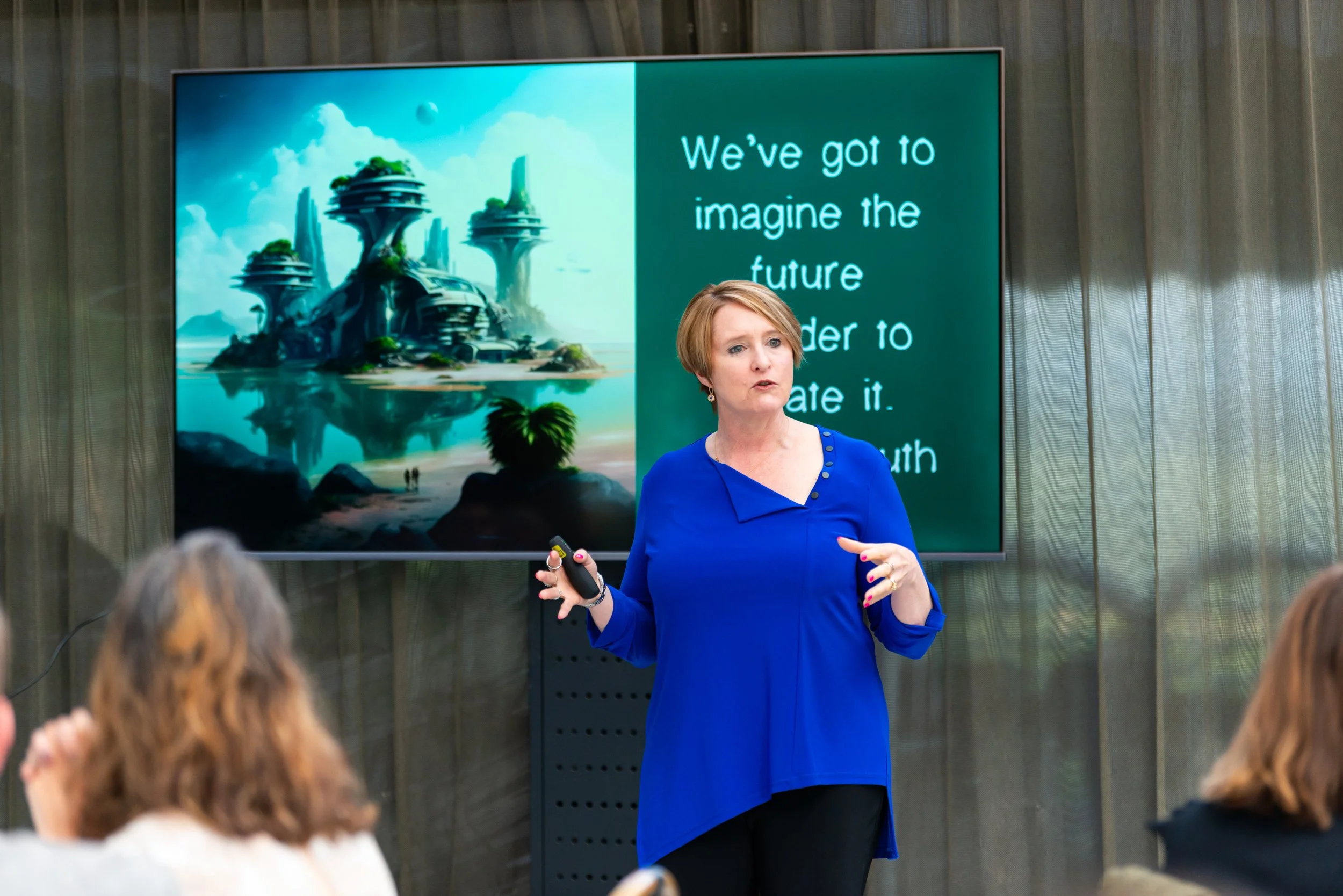Virtual and remote working is not going away anytime soon.
Even for teams that are mostly in person, such as construction sites, hospitality, healthcare, virtual gathering will remain part of communication and engagement.
How do we do this better?
In the recent Immersion with Amplifiers™, my advanced leadership training program, we tackled a few of the key elements.
The questions about leading hybrid teams include:
How do you balance collaboration with accountability?
How do you create quality interactions online?
How do you make sure everyone is engaged?
How do you get teammates to trust their colleagues will still deliver and be productive?
How do you get the best out of team members whose performance flags when working remotely?
How can we respond to well-being needs around social interaction, touch and connection?
How do you ensure engagement?
How do you measure performance remotely?
We are tackling these issues throughout the quarter. Here are some useful tips for you in the meantime:
Virtual teams and face to face teams still need the same fundamentals
Regardless of where people work, all teams need the following fundamentals nutted out in order to be successful:
Fundamental 1. Build and use a Culture Compass™.
This is your team’s agreements about purpose, values, results, and agreed behaviours.
I’ve written about this previously here and here and in my third book, Loyalty: Stop unwanted staff turnover, build engagement, and create lifelong advocates.
It sets the boundaries for focus and action.
When we know what the expectations are, we are free to excel.
Fundamental 2. Trust.
Trust is a by-product of ensuring you have a strong sense of purpose, know the results the team and individuals are producing, have a clear structure of communication and accountability, leverage strengths, and create safety in the team.
There’s a lot that goes into trust!
You can start with:
Be trustworthy. Keep your promises.
Get to know each other as individuals. Find out more about your team members, like what kind of movies they like, what they like to read, what they do in their down time.
Showcase each team member's credentials. People will trust a little more when they know their colleagues have experience and expertise in their area.
Be focused on others. When people know you are interested in and care about them, it makes it easier to trust you.
Fundamental 3. Run better meetings.
This was a hot topic for our Amplifiers™!
Many leaders default to their preferred mode in meetings: if you’re a visual person, you might refer to endless slides and extensive paperwork.
If you’re an auditory person, you might default to discussion and wonder why not everyone wants to contribute.
If you’re a kinesthetic person (someone who likes to move around), you might insist on standing meetings or walking meetings (even remotely!).
To have more engagement in meetings, you need to make sure there is a variety of methods for people to contribute and participate in the meetings. This is especially true for idea generating and decision-making meetings.
There are plenty of ways to build bonds between remote team members: be creative.
Amplifiers™ came up with some excellent ideas. Here are some of them:
Ideas for better workflows:
Celebrate wins.
Be kind and listen to their concerns and struggles.
Admit your own mistakes and how you can do better.
Do a peer appreciation share each week for a team member.
Have 1:1 virtual cuppas with team members.
Have a weekly online drop-in cuppa chat: the virtual water cooler/coffee break.
Use breakout rooms for small group or paired discussions.
Create routines and rituals: for birthdays, for work anniversaries, for completed projects
Use online collaboration tools for asynchronous contributions: have a document where people can add thoughts outside of a meeting time, when it suits them
Share stories on a theme.
Learn together: do group reflective practice.
Do site tours of different work locations.
Have a whole of organisation video town hall for announcements, progress reports, celebrations, and answering questions.
Have a regular newsletter/video/social media information share.
Invite other teams we rely on to connect via online platforms.
Ask people to share positive/negative stories about learning and working online.
Develop a collaborative document on ‘time management tips working from home’.
Make progress visible: an online kanban progress board like Trello or gantt chart to show where projects are up to against key milestones
Ideas for team learning:
Do web-based training sessions together.
Create an online book club (could be work related, or not!)
Bring people together at an offsite.
Conduct a remote offsite: everyone goes to a special location of their choosing and dial in from there.
Skills / knowledge/ resource exchange each month to model growth mindset.
Organise peer check ins for support and learning.
Online tech chat for all: to develop skills, learn new apps, or collaboration tools.
Ideas for social connections:
Weekly online social event:
Show and tell
Drinks
Trivia
Online karaoke / talent show
Secret Santa / appreciation
Send gifts.
Do an activity together: post out the resources for a craft or recipe.
Start with a personal share at each meeting: what did you do on the weekend? How is your favourite project going?
Meet kids / pets.
Garden/house tour via zoom.
Send a parcel with an item in it, ask people to add to it and send it on to the next team member.
Include a game at the beginning of an online session.
Share food: order cheese platters/nibbles to be sent to each person’s home so that you can share a meal together.
Have a song of the day / joke of the day / meme of the day / news story of the day theme on your intranet channel.
‘Wear a hat’ themed morning tea.
Set up a competition where the prize is posted out.
Allow chat time before and after meeting time.
Send a hard copy, handwritten letters of appreciation and thank you cards.
Share a joke of the day.
Share pictures of your hobby or pastime or sport.
What is ONE THING you could do to build better connections between team members?
***
Related Articles:
Myths of high performing leadership teams
Three crucial characteristics of high performing leadership teams
Three essential habits for high performing leadership teams
***
About the author, Canberra leadership expert Zoë Routh:
Zoë Routh is one of Australia’s leading experts on people stuff - the stuff that gets in our way of producing results, and the stuff that lights us up. She works with the growers, makers, builders to make people stuff fun and practical.
Zoë is the author of four books: Composure - How centered leaders make the biggest impact, Moments - Leadership when it matters most, Loyalty - Stop unwanted staff turnover, boost engagement, and build lifelong advocates, and People Stuff - Beyond Personalities: An advanced handbook for leadership. People Stuff was awarded Book of the Year 2020 by the Smart WFM Australian Business Book Awards.
Zoë is also the producer of The Zoë Routh Leadership Podcast.

